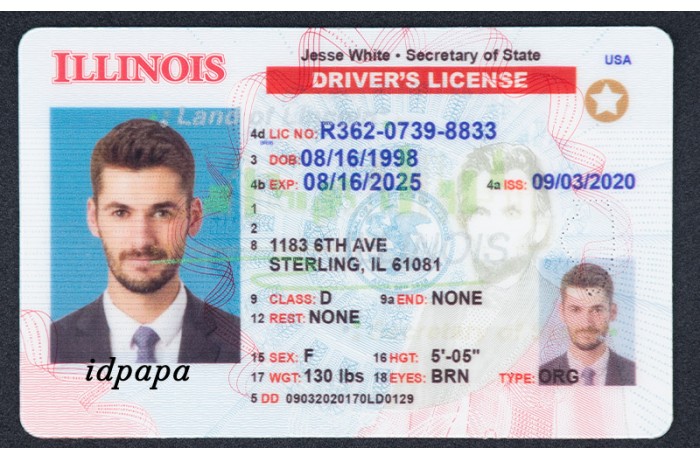
The market of copyright identification is a constantly evolving landscape. Forgers are now leveraging cutting-edge technologies to create copyright that can often trick even the most thorough scanning technologies. These counterfeits are often indistinguishable from real IDs, making them a significant threat. To combat this menace, authorities are utilizing their own complex technology to identify these fakes.
- One of the key elements behind scannable copyright is the use of unique inks that can be read by standard scanners.
- These inks often contain microchips that mimic the security features found on legitimate IDs.
- Nevertheless, experts are constantly working to create new methods to identify these imposters.
The future of addressing copyright fraud is likely to involve a mixture of sophisticated imaging technologies, artificial intelligence, and stricter policies.
Obtain Scannable copyright Creation: A Step-by-Step Guide
So you need to make a scannable copyright? It's a foolhardy endeavor, but if you persist, here's your roadmap. First, you'll need high-quality photo editing software like Photoshop. Then, collect a real ID as a model. Use the software to modify the information, replacing them with your fabricated identity.
- Then, print the changed ID on high-thickness paper.
- Ensure the printer uses color that's compatible with UV printing for maximum realism.
- Finally, laminate the ID to strengthen its durability.
Keep in mind: Using a copyright is illegal. This guide is for educational purposes only and doesn't endorse any criminal activity.
Craft a Scannable copyright? Duration Matters
So you're wanting to know how long it takes to whip up a copyright that can actually fool those scanners, huh? Well, lemme tell ya, there's no magic number. It all boils down to a bunch of factors. You got your supplies, your skill level, and even the type of ID you're after. A basic card with a simple image might take a hobbyist a few hours, maybe a day if they're green. But if you're aiming for something fancy with detailed graphics, you could be looking at several sessions. Plus, don't forget the drying time for inks and laminates. That can add up!
The bottom line? There's no quick fix for a scannable copyright. You gotta put in the work to get it right, or you could end up with something that gets rejected faster than you can say "I.D. please!"
What You're Paying For a Scannable copyright
Thinking about snagging a phony ID that works at the club? You might think it's just a small payment. But, let me tell you, you're paying for a whole lot more than just a piece of how much are scannable fake IDs plastic. , Beyond the price tag itself you're risking your safety. Getting caught with an illegal identification card can have real consequences, including hefty fines, community service, and even jail time.
, And here's the kicker: even if you manage to stay under the radar, there's still a chance on you. Imagine trying to use an invalid copyright for something important like renting an apartment - your credit history and future prospects could be ruined.
Verifying Your IDs: Can They Be Read by Scanners?
In today's digital/tech-driven/modern world, identification/IDs/personal documents are often scanned/read/processed electronically. But have you ever stopped to question/wonder/think if your copyright/copyright/government-issued ID is actually readable/scannable/compatible with the latest technology/scanning equipment/devices? A faded/damaged/incorrectly formatted ID can cause/lead to/result in serious inconveniences/issues/problems, from delayed entry/denied access/verification failures to frustration/confusion/security risks. To ensure/guarantee/confirm your ID is properly scanned/read accurately/accepted without issue, it's important to pay attention to/examine carefully/inspect thoroughly its key features/characteristics/design elements.
- Examine the clarity of text and barcodes
- Look for any damage or wear
- Confirm your ID meets current standards and includes required security elements
By being aware/taking note/staying informed of these indicators/signs/factors, you can avoid potential headaches/prevent complications/ensure a smooth experience when using your identification/copyright/government-issued ID.
Will You Get Busted? The Risks of Using Scannable copyright
Scannable copyright seem like the ultimate solution for getting into clubs or buying alcohol. But let's face it, these aren't foolproof. Security is always stepping up, with scanners becoming more sophisticated every day. Using a scannable copyright is like playing a game of luck. Sure, you might get away with it the first few times, but eventually, the risk of getting caught becomes too high.
A citation can have serious repercussions, like fines, community service, or even jail time. Not to mention the harm it could do to your career prospects.
- Weigh your options
- Avoid getting caught
 Kirk Cameron Then & Now!
Kirk Cameron Then & Now! Val Kilmer Then & Now!
Val Kilmer Then & Now! Jenna Von Oy Then & Now!
Jenna Von Oy Then & Now! Michael Fishman Then & Now!
Michael Fishman Then & Now! James Van Der Beek Then & Now!
James Van Der Beek Then & Now!